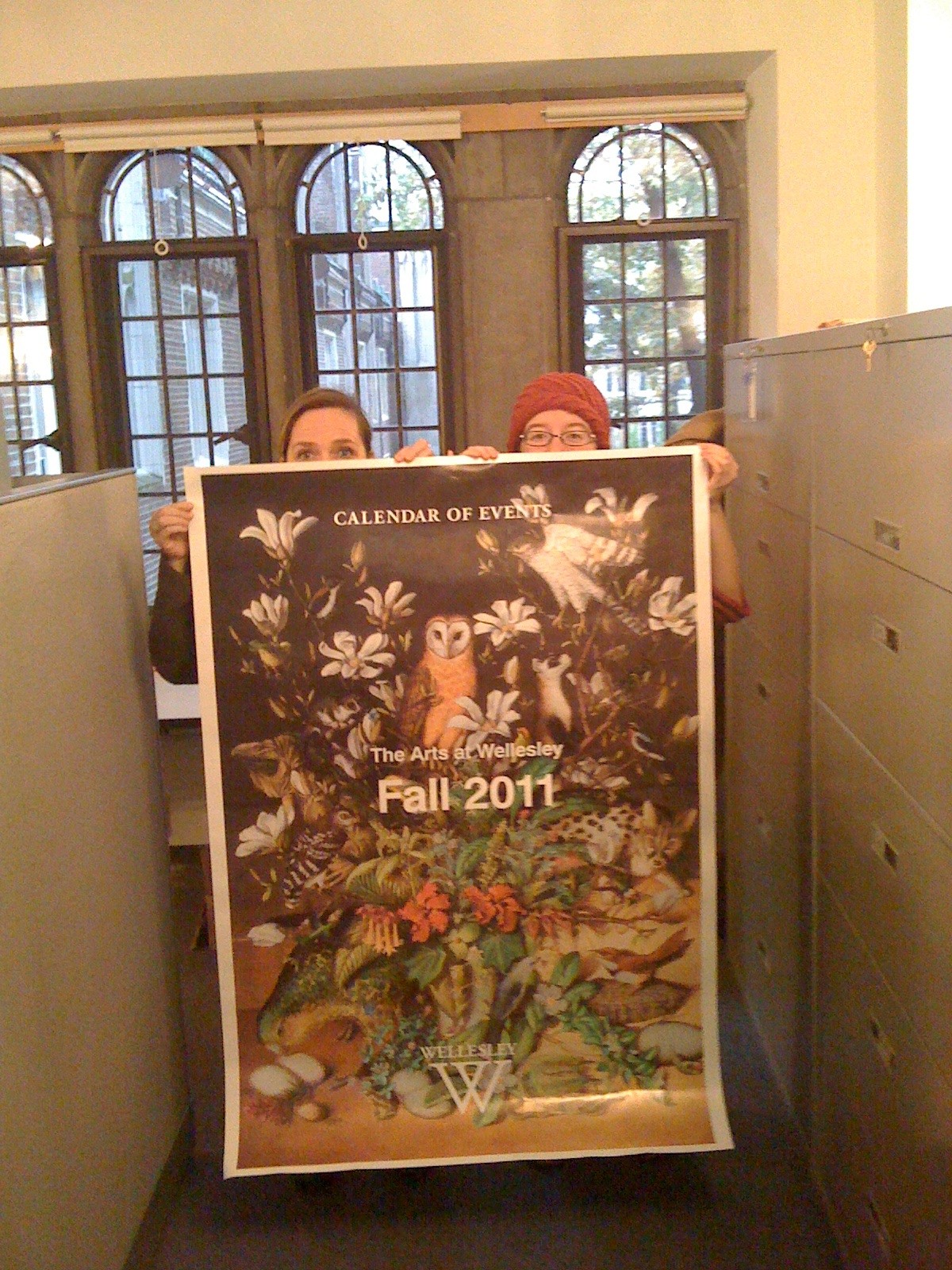
A WONDERFUL guest post from Claire Shiplett, Wellesley Class of 2014, and Design Student Assistant in the Public Affairs Office. It’s a touching reminder to all of us of how rewarding it can be to look closely.
“The Davis Museum’s recent exhibition “Global Flora” features the fantastic botanical imagery of Isabella Kirkland. In her piece Back, Kirkland creates an exquisite and detailed portrait of plants and animals that have been successfully brought back from the brink of extinction. Using one of Wellesley’s amazing large format printers for the first time a few weeks ago, Kyra Gregerson and I were able to interact with Kirkland’s work in an entirely new and unique way. For a promotional arts event, we decided to blow up Kirkland’s piece to use as a backdrop, printing it to nearly four feet long. I hadn’t given much thought to the actual printing itself, but as the first lines of ink began to seep into the paper, the excitement and awe began to grow inside of us. We were told that the printing would take about half an hour and that we could wait and then come back, but Kyra and I were determined to watch, dragging up two chairs to sit directly in front of the printer.
We were mesmerized. I can only imagine how incredible it would have been to be able to sit and watch Isabella Kirkland draw the first outlines of each curling leaf and each little paw and beak, to see this vibrant fountain of life overflow from her paintbrush. As the printer head went back and forth and back and forth, each line of this beautiful piece of art was reborn. Every detail of Back became magnified as flower stems and leaves appeared to grow before our eyes and tiny hummingbirds and finches were revealed to us like treasure, the varied textures of the great owl’s feathers and the delicate pause of a butterfly like secret jewels. We found ourselves laughing and exclaiming, pointing as we suddenly discovered a detail neither of us had noticed when looking at the piece as a whole, delighted as each animal took shape. In general viewing circumstances, the viewer first sees the art as a whole piece, feeling its impact as a complete work. It is only later that the viewer is able to lean in and look more closely at the details, and this experience is always within the context of the complete work. As the large format printer slowly brought Kirkland’s bright, abundant world into existence, the organic lines, colors, and textures were each framed in concentrated doses, creating a deliciously rich experience. We were like children discovering the world of our backyard lawn through a magnifying glass, in awe of the intensified beauty contained within the single vein of a leaf. We were filled with such joy and inspiration when the piece was completed that I don’t think we could have been happier if we had in fact created the piece ourselves. We experienced the magical illusion of being involved in the art’s creation, as if we had been able to sit and watch a tree grow from a sapling with our noses pressed against the bark, transfixed by each notch and valley.”

 '
'
16 Responses to Wildlife Reborn